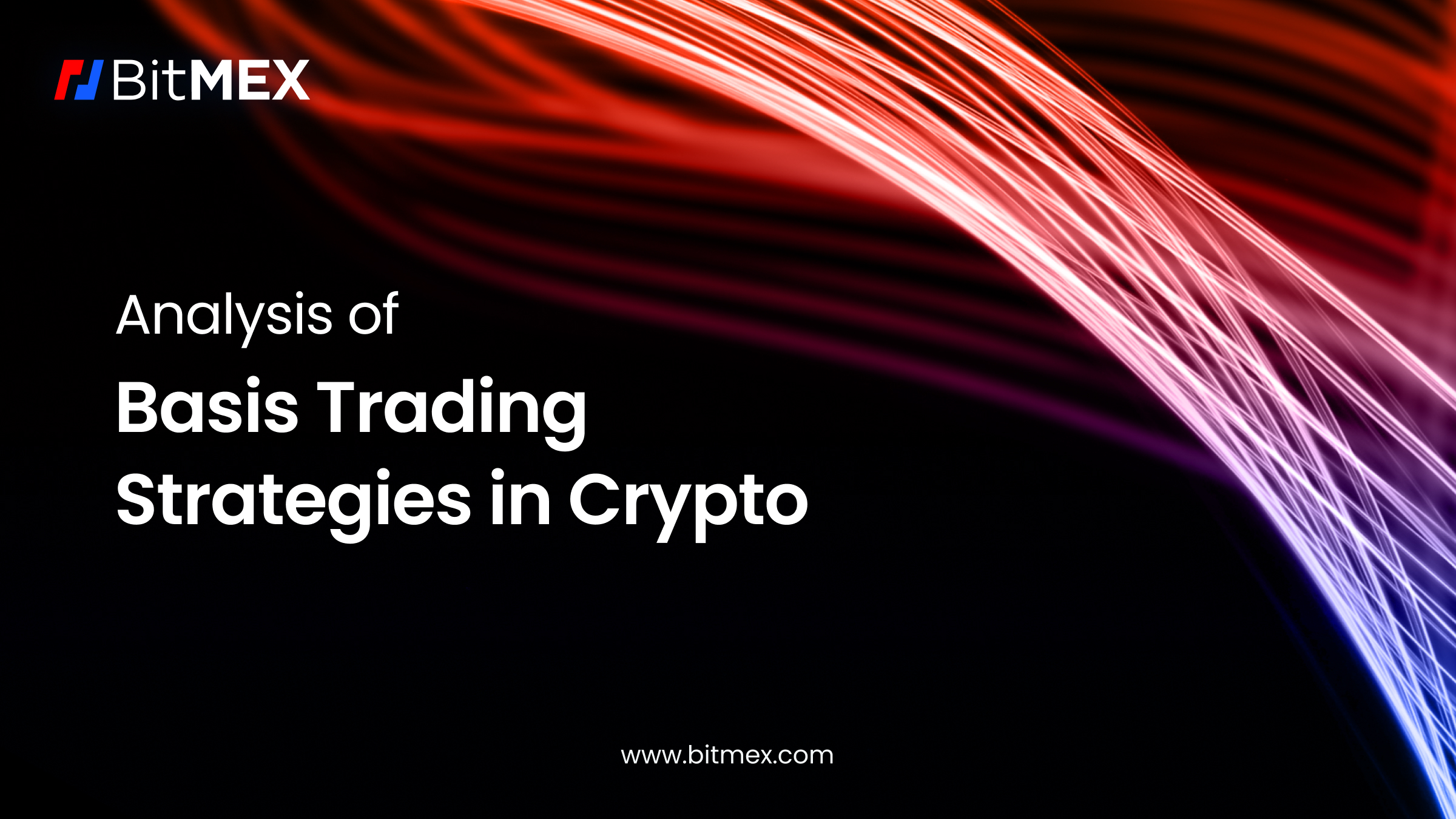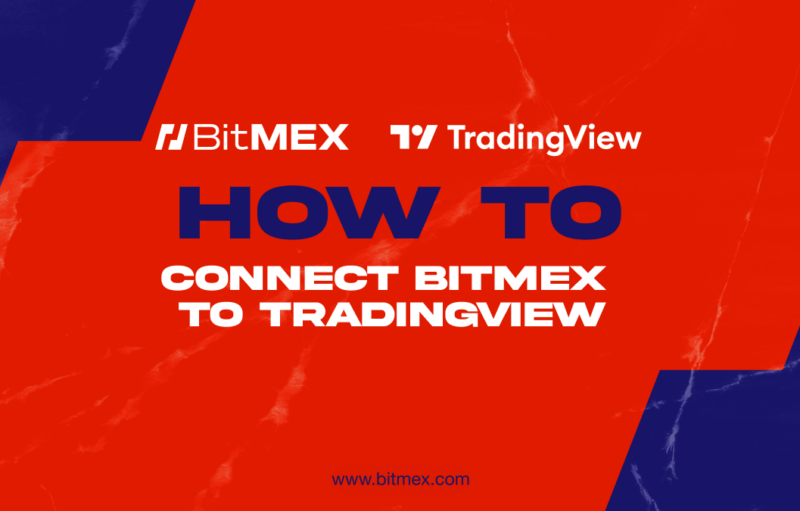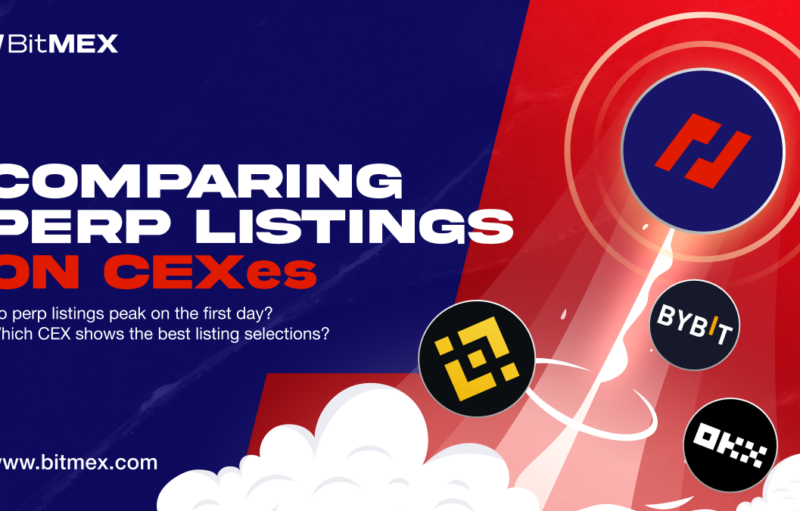
A common question that traders have is how to execute interest rate trades using BitMEX products. These trades are also referred to as basis trades.
This article gives an overview of three basic basis trading strategies in crypto, which allow traders to capture basis as profit.
Where Does Basis Come From?
Traders on derivative exchanges seek to own more Bitcoin than they are able to purchase with cash. Market makers and arbitrageurs who are usually short Bitcoin, hedge themselves by purchasing it with USD held on the underlying exchanges.
These traders supply USD to speculators for a positive rate of return. This basis (or interest) compensates them for counterparty risk and the opportunity cost of capital. It also presents opportunities for traders to capture profit, hence the strategies outlined in this article.
Before diving into the strategies, it is necessary to have a basic understanding of the derivative contracts offered on BitMEX.
A Look at Crypto Derivative Contracts on BitMEX
Futures contracts give the buyer or seller an entitlement to the difference between the entry and settlement price at maturity. Buyers and sellers pay and receive fixed interest rates depending on whether the basis is positive or negative respectively at entry. Basis is the difference between the futures and spot price.
Perpetual swaps are similar to futures contracts, except it has no settlement date. Traders are free to hold their position for as long as their capital allows. The price of swaps are anchored to the underlying spot price – this is achieved through the long and short sides exchanging interest rate payments, depending on whether the swap is trading at a premium or discount. A perpetual swap is essentially an exchange of floating interest rate payments for price performance.
For the strategies below discussing futures contracts, the XBTU23 contract – a Bitcoin/USD 100x leveraged futures contract on BitMEX – will be used as an example. Each contract is worth one USD of Bitcoin. For those discussing perpetual contracts, the XBTUSD contract – a Bitcoin/USD 100x leveraged perpetual swap – will be used as an example. Each contract is also worth one USD of Bitcoin.
Both XBTU23 and XBTUSD use the same underlying index. Therefore, trading one against the other in the same quantity eliminates any Bitcoin / USD price risk.
1. Future Trading vs. Spot Trading
This is the simplest basis trade, also commonly called cash and carry. Basis can be positive or negative, but futures usually trade more expensive than spot, meaning basis is usually positive. This is because speculators who are short Bitcoin can only make 100%, but the maximum return for longs is unlimited.
Here is an example scenario of a basis trade you can make with the futures and spot market on BitMEX.
Mechanics
- Buy $1,000 worth of Bitcoin.
- Sell 1,000 contracts of XBTU23.
- At expiry, sell the remaining Bitcoin.
Margin Considerations
A minimum amount of 1% of Bitcoin value must be deposited as margin to open a XBTU23 position on BitMEX. The remaining Bitcoin is advised to be stored in a properly secured crypto wallet.
Note that if the XBTU23 price rises, your position is at risk of being liquidated. By using 1x leverage, you cannot be liquidated. However, If you decide to take up higher leverage, remember to monitor your liquidation price and occasionally top up your BitMEX account to meet the maintenance margin requirement.
Profit Potential
The basis captured is your profit. You must hold the trade until the XBTU23 contract expires to realise the full amount.
Risks
If you do not fully margin the XBTU23 position, you risk getting liquidated in the event where the price rises before you deposit additional margin on BitMEX.
2. Swap Trading vs. Spot Trading
Due to a historically positive funding rate, this has become a very popular trade option. A positive funding rate means that longs pay shorts every eight hours.
Here is an example scenario of a basis trade you can make with the perpetual swap and spot market on BitMEX.
Mechanics
- Buy $1,000 worth of Bitcoin.
- Sell 1,000 contracts of XBTUSD.
- Unwind the trade when you believe funding will turn negative for an extended period of time.
Margin Considerations
Margin considerations for this strategy are the same as the previous trading strategy (futures trading vs. spot trading).
Profit Potential
It is not possible to know the exact amount of profit before entering this trade, as the funding rate changes every eight hours. This is simply the mechanics of longing a floating rate instrument.
Risks
There is always the risk of losing money when the funding rate goes negative. Depending on when you enter the trade, you could experience long periods where you pay funding every eight hours.
During prolonged periods of negative funding, it is recommended that traders unwind the position rather than maintaining it, which leads to loss.
3. Future Trading vs. Swap Trading
This is the most advanced strategy out of the basis trades presented in this article, which is a fixed vs. floating interest rate trade. Unlike the previous two strategies, the performance can be amplified using leverage on both legs of the trade.
Mechanics
There are two options for the future vs. swap basis trade.
a) Sell Futures and Buy Swaps
The first is to sell futures and buy perpetual swaps. This is referred to as a curve flattener. If the futures basis decline is greater than the interest you pay being long on the swap position (either due to time decay or outright movement in the implied interest rate), you make money.
- Sell 1,000 XBTU23 contracts.
- Buy 1,000 XBTUSD contracts.
If you place the trade when XBTU23’s basis is positive, wait until expiry, and then sell the XBTUSD contracts.
If you plan to trade around the XBTU23 basis, wait for its basis to fall sufficiently. Then, buy back XBTU23 and sell XBTUSD to unwind the trade at a profit. You can employ this strategy when the XBTU23 basis is already negative but expect it to decline even further.
Selling XBTU23 at a negative basis means you lose money each day until expiry (AKA negative carry or negative theta). Informed and seasoned traders tend to avoid any situation where their fixed interest leg is entered into at negative carry, which makes turning an eventual profit more difficult.
This type of basis trade is a bearish one, with respect to Bitcoin spot movements. During a quick and sharp price drop, traders will short futures and swaps. The futures’ basis will decline and turn negative, and the swap funding rate will go negative as well. In this situation, profits due to movements in interest rates will accrue on both legs.
b) Buy Futures and Sell Swaps
Another option for the futures vs. swap basis trade is to buy the futures and sell the perpetual swaps. This is referred to as a curve steepener. If the futures basis rise is greater than the interest paid being short on the swap (either due to time decay or an outright movement in the implied interest rate), you make money.
- Buy 1,000 XBTU23 contracts.
- Sell 1,000 XBTUSD contracts.
If you place the trade when XBTU23’s basis is negative, wait until expiry, and then buy back the XBTUSD contracts.
If you plan to trade around the XBTU23 basis, wait for its basis to rise sufficiently, then sell XBTU23. Afterwards, buy back XBTUSD to unwind the trade at a profit. You can employ this strategy when the XBTU23 basis is already positive but you expect it to rise even further. Buying XBTU23 at a positive basis means you lose money each day until expiry.
This type of basis trade is a bullish one with respect to Bitcoin spot movements. During a bull market, traders will buy futures and swaps. The futures’ basis will rise and turn positive, and the swap funding rate will go positive as well. In this situation, profits due to movements in interest rates will accrue on both legs.
Profit Potential
The interest rate differences captured in these trades are small. In order to earn a respectable return on equity, leverage must be used. If the interest rate differential received is 1% un levered, your return on capital is only 0.5%. Each leg must be margined separately.
Using the same example but with 10x leverage, your return on equity increases to 5%. The one benefit to curve trades is that you do not need to hold until the futures contracts’ expiry. You can go one way, then reverse quickly as conditions change. This is how you become an interest rate day trader.
Speculating on curvature is more difficult, and there are less people employing such strategies.
Risks
For a curve flattener, you are long on the swap. If the total net swap funding payments (i.e. positive funding rate) exceed the basis income from selling the futures contract, you lose money.
For a curve steepener, you are short on the swap. If the total net swap funding payments (i.e. the funding rate is negative) exceed the basis income from buying the futures contract, you lose money.
In general, when the futures basis is positive, longs pay and shorts receive the swap funding. The opposite occurs when the futures basis is negative. This is because traders will arbitrage the two products to keep the interest rate differentials in line. Profiting from this strategy would require good foresight into interest rate curve movements.
Conclusion
The most important aspect of the three strategies outlined in this article is that none of them take any Bitcoin price risk. Bitcoin to basis traders is just another asset with an interest rate curve that can be arbitraged. This curve becomes distorted during highly leveraged speculator induced spot price movements. This allows professional traders to earn excellent volatility adjusted returns.
For more educational resources on trading at BitMEX, we invite you to head here for our growing portal of educational guides that cover trading, and the wider cryptocurrency ecosystem.
As always, be the first to know about our latest updates by connecting with us on Discord, Telegram, and Twitter. We encourage you to also check our blog regularly. In the meantime, if you have any questions please contact Support.
Related
The post appeared first on Blog BitMex






